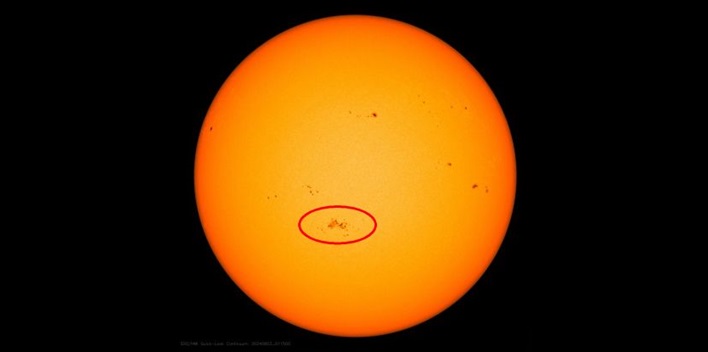Stargazers May Soon Get Another Shot At Viewing Breathtaking Auroras
Last month people as far down as Florida reported being able to see the aurora. The culprit behind the intense show of lights was sunspot region AR 3664. Following the event, AR 3664 rotated away from the view of Earth. Now that it has rotated back around (and been given a new name, AR 3697), it is still showing as being very active, erupting with a powerful X 2.8 flare on May 27, 2024.
Since then, the sunspot region has spewed out four more X-class flares, for a total of five since June 3, 2024. While none of those reached the intensity of May’s event, it is possible that some could in the coming month.
The aurora borealis, or northern lights, appear when highly charged solar wind particles flowing from the Sun collide with air molecules in the Earth’s atmosphere, with the transference of energy resulting in light. Typically, these light shows are limited to the Polar Regions where the magnetic fields converge. However, when the Sun emits a strong enough solar flare, such as the ones last month, it can be seen in more places around the world.
According to Spaceweatherlive, stargazers should not expect much from the recent solar flares, but there is a 30% chance that more X-class flares will be emitted during June. Another factor that favors more light shows here on Earth is that AR 3697 is currently around the center of the Sun’s disk. This translates into any eruptions being pointed pretty much directly at Earth. However, predicting these events is not a simple task.
“We’re forecasting stuff from 93 million miles away, so it’s very difficult. And our science is limited,” explained Shawn Dahl, a senior space weather forecaster. “We can do a great job of predicting the probability that the flare will happen, and if so, what level it might get to, and the same with radiation storms, but we have no way of knowing that a flare is imminent. That science doesn’t exist. We have to wait for them to happen.”
Experts say the Sun is entering, or has entered, its peak of its 11-year activity cycle. This could mean that the aurora event last month will not be the last of its magnitude this year, or even the strongest.



